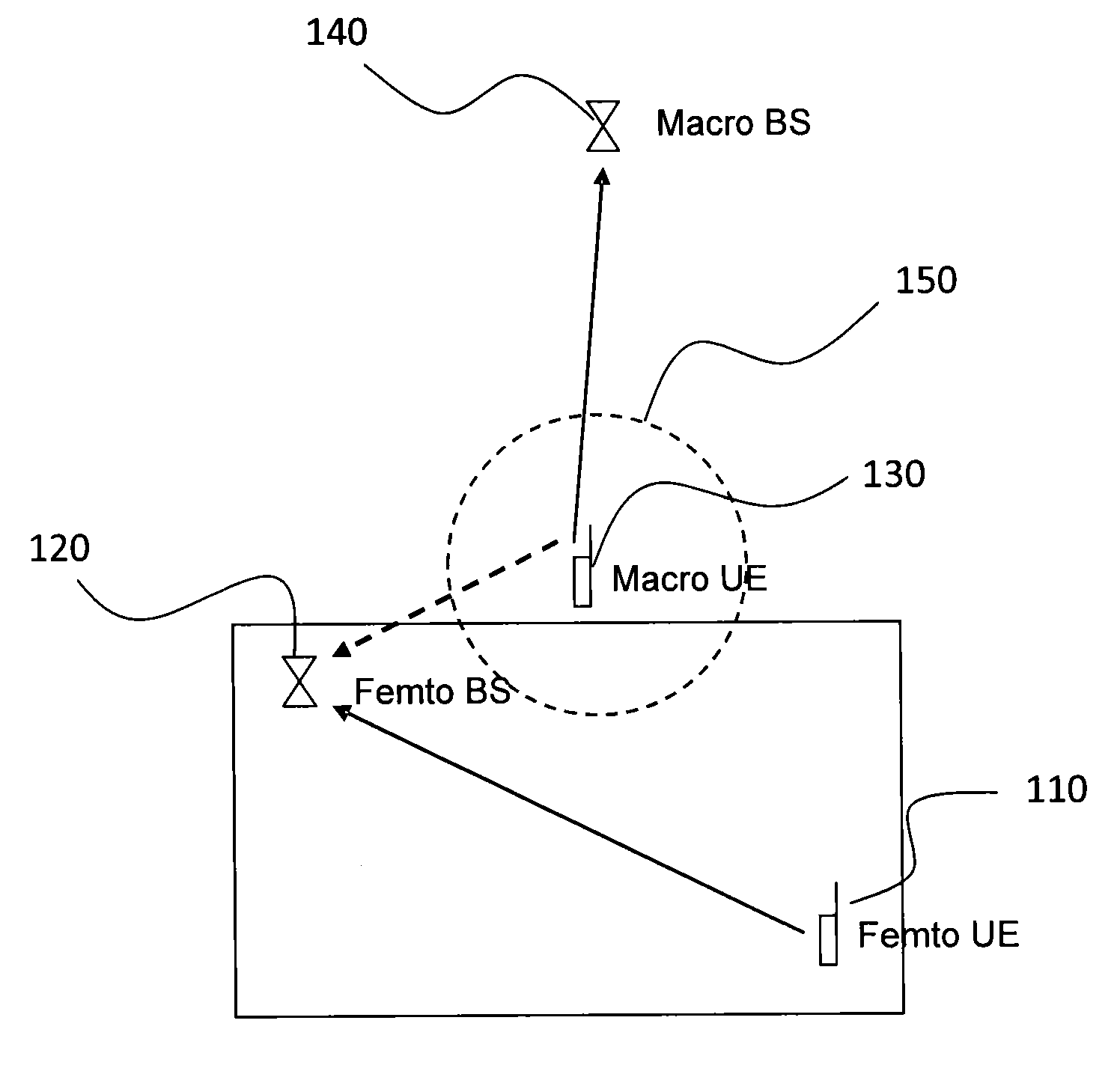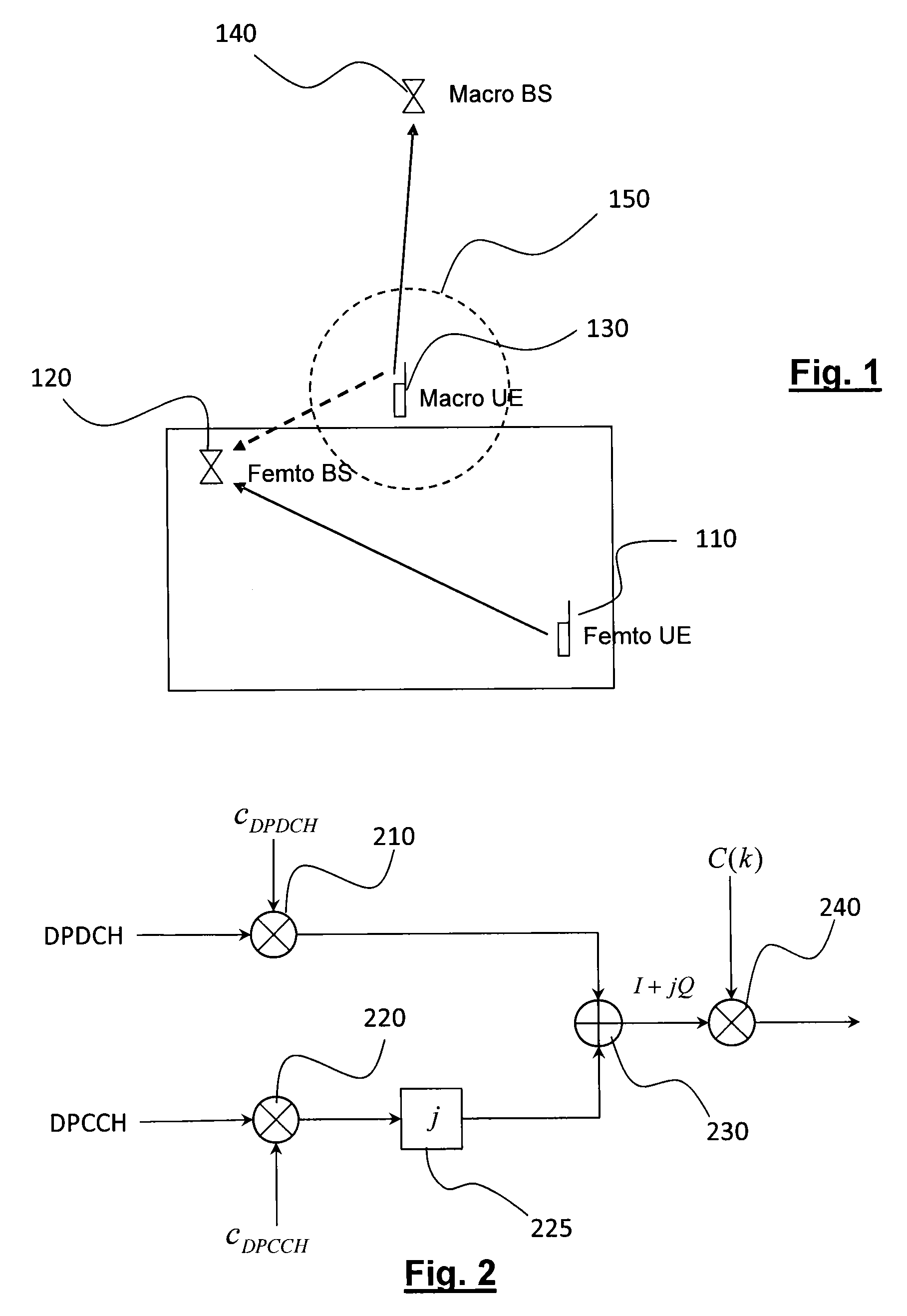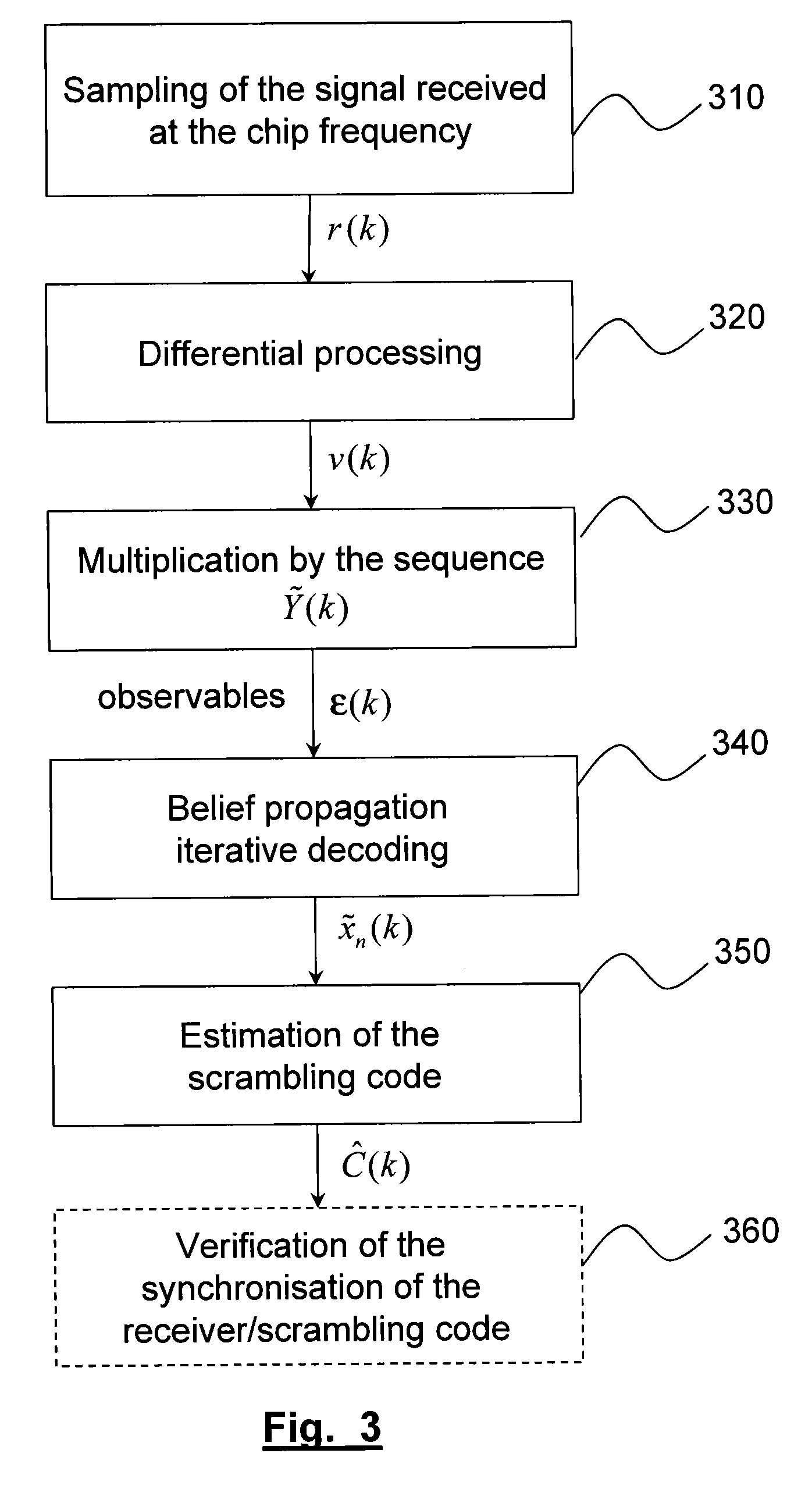Method of blind estimation of a scrambling code of a wcdma uplink
a scrambling code and uplink technology, applied in the field of mobile telecommunications, can solve the problems of complex determination in blind mode, communication in a femto-cellular network can be affected, and exist in the literature an algorithm of multi-user detection
- Summary
- Abstract
- Description
- Claims
- Application Information
AI Technical Summary
Benefits of technology
Problems solved by technology
Method used
Image
Examples
second embodiment
[0026]The invention relates to, in a second embodiment, a scrambling code estimation method used on an uplink of a terminal in a WCDMA system, the signal transmitted by the terminal on said link being transmitted in the form of frames and scrambled by means of the scrambling code, the scrambling code being constructed from a Gold sequence (zn) obtained as sum of a first (xn) and of a second (y) sequences of maximal length, in which:[0027]one samples, at the chip frequency of the scrambling code, the signal received by a receiver;[0028]one performs a differential processing of the samples thus obtained, said differential processing comprising the calculation of the Hermitian product of successive samples and the calculation of the imaginary part of said product, the differential processing supplying a sequence of observable values (v(k));[0029]one performs an iterative decoding of the sequence of observables to obtain a third sequence (a), sum of a shifted and decimated version of th...
first embodiment
[0039]FIG. 3 represents in a schematic manner the method of determining a scrambling code according to the invention;
[0040]FIG. 4 represents in a schematic manner the details of step 350 in FIG. 3;
[0041]FIGS. 5A and 5B give the structure of a same generator of an M-sequence respectively in a Fibonacci representation and a Galois representation;
[0042]FIG. 6 represents in a schematic manner the method of determining a scrambling code according to a second embodiment of the invention.
PUM
 Login to View More
Login to View More Abstract
Description
Claims
Application Information
 Login to View More
Login to View More - R&D
- Intellectual Property
- Life Sciences
- Materials
- Tech Scout
- Unparalleled Data Quality
- Higher Quality Content
- 60% Fewer Hallucinations
Browse by: Latest US Patents, China's latest patents, Technical Efficacy Thesaurus, Application Domain, Technology Topic, Popular Technical Reports.
© 2025 PatSnap. All rights reserved.Legal|Privacy policy|Modern Slavery Act Transparency Statement|Sitemap|About US| Contact US: help@patsnap.com



